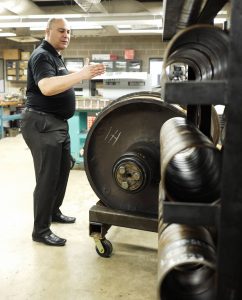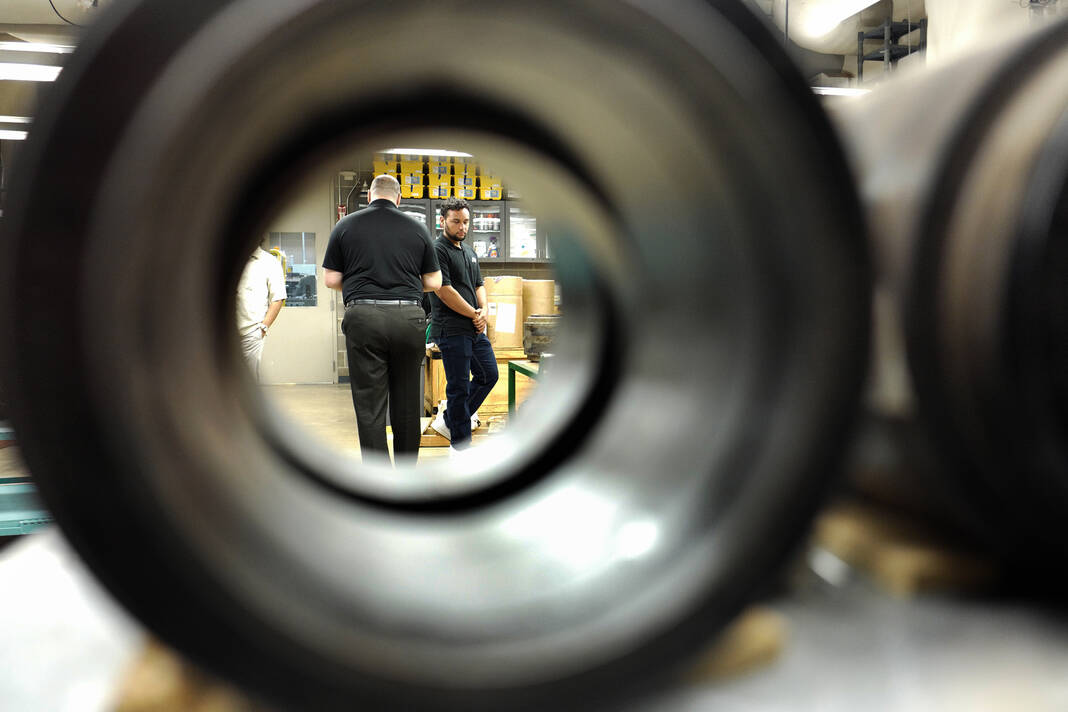|
Only have a minute? Listen instead
Getting your Trinity Audio player ready...
|

EDINBURG — For over a decade, the UTRGV University Transportation Center for Railway Safety (UTCRS) has been at the forefront of safety in the industry all while giving students interested in engineering hands-on and real world experience.
Led by UTCRS Director Constantine Tarawneh, the center was established in the fall of 2013 through a $4.5 million grant by the U.S Department of Transportation.
In its 10 years of operation, it has seen countless students go through the center and who were inspired by engineering summer camps to pick a career. Some have even worked at the center citing their passion started at one of the camps.
UTCRS operates as a consortium with the Texas A&M Transportation Institute, the University of Nebraska Transportation Center, the University of South Carolina, the University of California-Riverside, and South Texas College.
The center is leading the way in efforts to reduce railway-related fatalities and injuries. Efforts include enhancing safety at rail crossings, developing durable materials, and pioneering advanced infrastructure monitoring technologies, contributing significantly to safer railway operations nationwide.
Tarawneh said the center has five key components regarding research, education, workforce development, technology transfer and community engagement.
Research conducted at the center can be subdivided into three focus areas of railway mechanical systems, railway operation and railway infrastructure.
The Monitor toured the lab area where Tarawneh and his students explained what is currently being researched and the other functions of the center.
With several projects happening at once, Tarawneh went into detail on one that was made completely by graduate students.
Creating a mechanism that replicates vertically and laterally impact on a train bearing, the project is to see how different movements affect the operating temperature.

“When we set them up for a master’s (degree), we give them a project in the last year as seniors so this way, once they start their masters, they hit the ground running instead of being delayed,” he said.
Tarawneh said a lot of the testing done at the center is contracted by companies in the industry that have these questions.
Pointing at another machine, he said it is testing how ideal time for a certain bearing will affect it.
“It is running bearings that were sitting ideal for a year,” Tarawneh said. “The East Palestine, Ohio derailment was formed by one of those bearings that were sitting idle for almost two years. So the work is for the National Transportation Safety Board. They’re trying to understand if the periods of inactivity have anything to do with bearings failing.”
Tarawneh added that the machine has been running for about 40,000 miles, almost a month nonstop with other machines built for longer duration such as 200,000 miles nonstop over a six-month period.
Other parts of the laboratory include a temperature-controlled room to see how below-freezing temperatures affect railways, a 300-ton press to be able to press bearings on to axles, the only one south of San Antonio, and a lab where students can build bearings and test bearings sent from companies.
“No other university in the United States … or private company has the testers we have,” he said. “The only places you will find similar testers are bearing manufacturers but those are not open to the general public meaning those are just for their own testing. We have the largest library of bearings, the students build bearings, customers send us bearings. If they want to enter the U.S. market the only way to enter … especially rail, you have to test in our facility.”
Building almost everything in-house, students built a machine, to pull bearings off of wheels, at a cost of around $8,000 compared to buying a machine at about $55,000.
“They learn how to build bearings to spec, they learn how to basically assemble bearings, inspect bearings, when accidents happen … they’ll send us the bearing to do a full inspection,” Tarawneh said.
Showing different bearings, their defects and explaining why it happened, the center made sensors to be able to catch defects early on and avoid accidents.

“A lot of the studies we do is to mitigate derailments and find out why these things happen,” he said.
With all of the advancements and accolades in the railway industry, Tarawneh said that one of the most rewarding parts of the center is to be able to fund students’ opportunities.
“So right now, we have 95 students working for the center,” he said. “One of my students that finished back in 2012, I sent her for a PhD in Nebraska. She graduated, went to Penn State, got a job as a tenure track and just got her career award, the National Science Foundation career award, which is the highest, most prestigious award. So seeing that really makes me like, you know, be proud of the fact that I have been a part of their journey and their success.”





